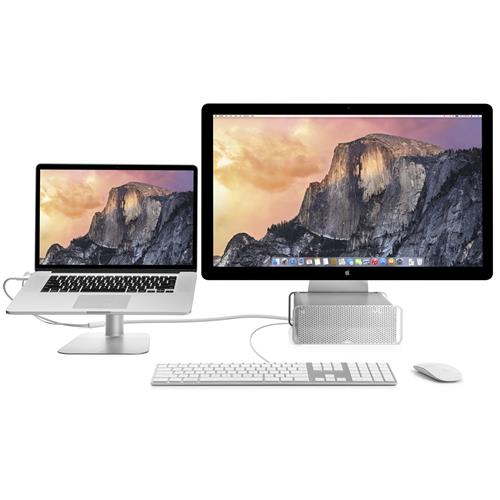


That last part is key for setting up the Studio Display in an ergonomic fashion. (Image credit: Apple)įor $300 more you can get a Studio Display with nano-texture glass (which is designed to be less reflective), and for an additional $400 you can get one with a better stand that lets you adjust both tilt and height. Unless you pay extra, the Studio Display's stand only lets you tilt the screen forward or back - you can't adjust its height at all. It comes with a stand that allows you to tilt the display forward or backward up to 30 degrees, or you can get it with a VESA mount adapter instead. Available for pre-order now ahead of its March 18 release date, the $1,599 Studio Display is a 27-inch 5K (5,120 x 2,280 pixels) display with a 60Hz refresh rate and a 12MP ultrawide webcam. Apple Studio Display: What you getīefore we get into nitty-gritty comparisons, let's quickly go over what you get with an Apple Studio Display. So if you were hoping to take full advantage of a monitor with built-in speakers, webcam and microphone on your Windows machine, you might be better off with something like the Samsung Smart Monitor M8. While it's an exciting monitor option for Mac users and likely one of the best monitors for MacBook Pro owners seeking an external display, Apple's Studio Display struggles to match the features of similarly priced displays when connected to a Windows PC. I need a new monitor (or two) for my PC, and I'd love a beautiful 5K display that offers some of the cool, unique features of Apple devices while also working seamlessly with my Windows PC.Īs I discovered after a little research, the Studio Display can't quite meet my needs on that front. I don't own any Mac hardware, but I have spent a significant amount of time with the company's latest MacBooks and tablets, and I can always count on them to have sharp, eye-catching displays. I was initially quite excited about the prospect of an Apple display with a built-in A13.

This is the same chip that powers the excellent iPhone 11 Pro Max and iPad 2021, and in the Studio Display it supports features like Center Stage (which automatically tracks and keeps you centered in frame if you move around in front of the monitor's ultrawide camera), spatial audio and Siri.


 0 kommentar(er)
0 kommentar(er)
